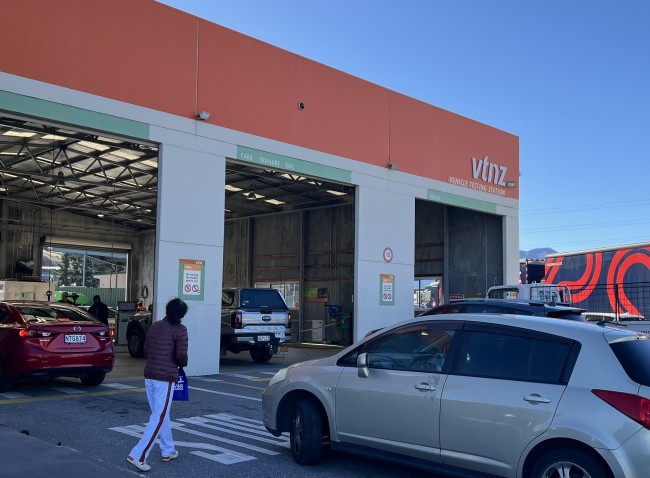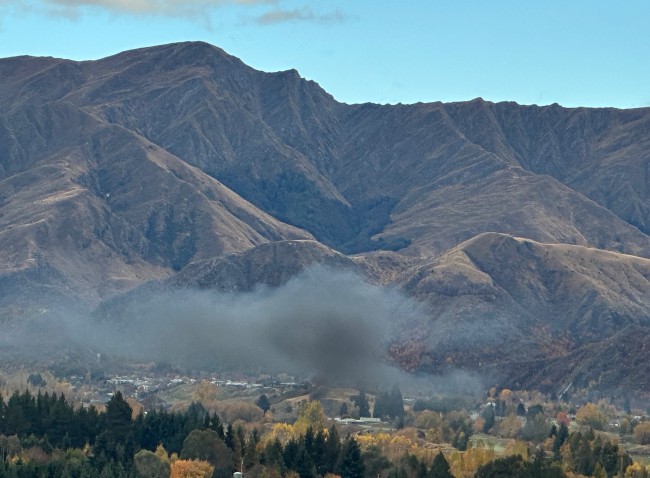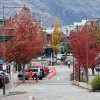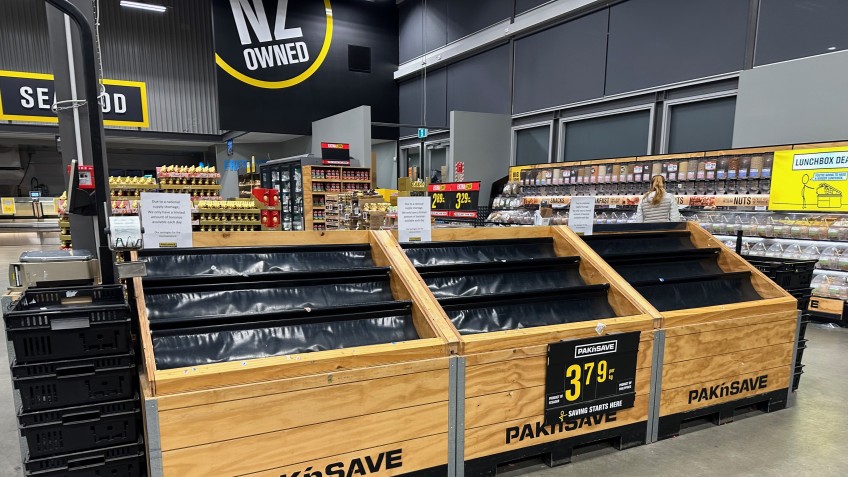
The lost skill of feeding ourselves: Wao
If the Southern Lakes were cut off from the rest of the country, how long do you think the food in your pantry would last you? For the region as a whole, our supermarket stores would do us for a week, according to the findings from the first phase of the Wao Food Resilience Project.
After that, it's estimated that we would need one Hercules aircraft to land every 21 minutes full of food.
This might all sound very apocalyptic. A little dramatic and highly unlikely - surely? But the Food Resilience Project (FRP), which kicked off in 2022, has found that this kind of situation is a very real risk, and one we’re not in the least prepared for.
As project lead Julia Blackford explains, we’ve totally lost the ability to feed ourselves. We’re nearly fully reliant on food coming in from outside the region, delivered to our stores by a daily convoy of trucks. “This makes us highly prone to shocks and disruption,” says Ms Blackford, a specialist in food systems sustainability.
This external reliance is one of the major issues the FRP was set up to identify the major risks with the vision to enable action on the Queenstown Lakes Climate and Biodiversity Plan 2022-2025, in growing a resilient and low carbon local food system.
The project is being led by not-for-profit Wao Aotearoa, with funding and support from the QLDC. Phase one of the FRP is complete, and the results have been compiled into a Food Resilience Report, giving us a snapshot of what our local food system looks like.
To capture this snapshot, the Wao team deployed a range of methods, including carrying out a Food Resilience Survey, conducting 35 in-depth stakeholder interviews, developing a stakeholder register and carrying out research on our region’s food history.
Yes, the report is a snapshot. But it is also a sounding of the alarm, and a call to action for our community. Though the survey shows that many of us are concerned about our region’s food resilience, Ms Blackford doesn’t think people are aware of the extent of the issues.
“We had 761 people fill out the survey, which was fantastic,” says Ms Blackford, “and through talking to the major stakeholders of our food system the survey was able to paint a picture of the biggest risks and challenges we face, as well as our opportunities going forward.”
Let’s start with the concept of food resilience. The John Hopkins Centre for a Liveable Future defines it as a food system ‘which is able to withstand and recover from disruptions and changes in a way that ensures a sufficient supply of acceptable and accessible food for all’.
So where are we at as a region? For a start, we are worried. “78 percent of us are concerned about our district’s food resiliency. [People] are aware of what food resilience is, and they’ve started seeing bare shelves,” says Ms Blackford. Secondly, we are overwhelmingly reliant on supermarkets - 95 percent of us source most of our food from the supermarkets, which in turn import most of their goods from outside the region.
There are a few issues with this, and many of them centre around what Blackford describes as our distribution vulnerability. “The rough estimate is that we are bringing in 750 pallets of food a week just for the supermarkets, and they’re coming in on roads that are very vulnerable,” she says. “We’re talking about the Lindis Pass, Devil’s Staircase - these are roads that are very prone to rockfall, slips, weather, all these sorts of things”.
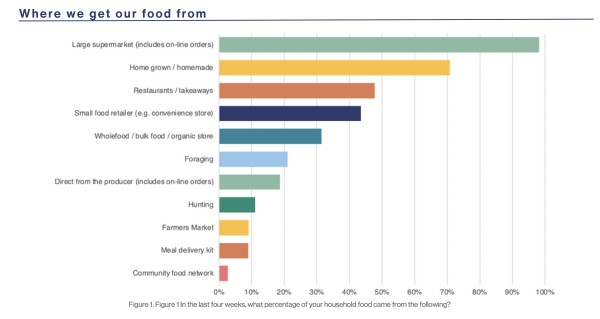
To feed itself, this district relies heavily on supermarket shelves staying stocked (Image: Wao Food Resilience Report).
This distribution vulnerability came up as a common concern across the stakeholder interviews. As one interviewee representing a food security organisation said, ‘With most of our food coming from elsewhere, we are very vulnerable to supply chain disruptions. People are unaware of this. We need education to encourage community awareness and involvement.’
As the report outlines, the threats to this fragile supply chain are only growing. Firstly, there are climate change related weather events, with Cyclone Gabrielle in early 2023 showing just how vulnerable our supply chains are.
Then there are natural disasters. “We cannot talk about risk without talking about earthquakes and the AF8,” says Ms Blackford. The AF8 is ‘Alpine Fault Line magnitude 8’: our region lies close to the alpine fault, and scientific research estimates there is a 75 percent probability of an Alpine Fault earthquake occurring in the next 50 years. There is a four out of five chance that it will be a magnitude eight-plus event.
As Ms Blackford explains, there are cascading hazards which can continue for days, weeks and years after an initial event. “These include avalanches and ice slides, rock falls, landslides, landslide triggered tsunami, loss of electricity and loss of telecommunication,” she says. In other words, all things which could sever us from our sole supply of food for an extended period of time.
No accurate picture of our region can be painted without considering tourism. “In an acute event, we have up to 33,000 extra mouths to feed,” says Ms Blackford. “Given we’re a population of just under 40,000, that's a significant thing to deal with.”
So let’s say we were to get cut off from incoming food supplies. What challenges do we face in feeding ourselves? A concern raised across the interviews was a lack of local production, and a lack of diversity in what we’re currently growing. As one large producer answered in their interview, “There are 19 major landowners in Wānaka. They all produce meat. How do you get them to grow vegetables for the Wānaka community?”
This lack of diversity was confirmed in the stakeholder register, an important outcome of the report which breaks down what we’re producing as a region. Ms Blackford explains that the stakeholders were split into four main groups: local producers (farmers, growers and food manufacturers), distributors (supermarkets and other retailers), council and public health (policy, zoning and compliance) and community organisations and non-profits.
“Based on the number of producers (rather than the volume produced), our biggest producers are those of red meat, followed by beer and wine, followed by honey,” says Ms Blackford. “So that might sound like a good meal to some, but there are other areas which are lacking.”
A potential contributing factor to this lack of diversity is the growing financial inviability of the food system. This was a point which multiple interviewees brought up, and the report found that for growers and farmers, food prices don’t represent the true cost of food production. For these smaller producers, pressures are making it hard to compete unless they’re at an industrial scale.
According to one small producer in the community, there are too many hoops to jump through for compliance. “It favours large scale food producers and volume rather than quality/local,” this producer answered. “It’s also hard for locals to buy local produce. The lack of a farmer’s market is a big problem.”
Ms Blackford says a lot of concern was voiced around our duopoly of supermarkets - an issue which has become a national conversation. Other challenges identified were the effects of climate change on our ability to grow food, as well as the rising cost of land and prioritisation of urban development.
People were concerned about the modern lifestyle making it difficult to grow food, and the risk of losing the knowledge of how to feed ourselves. Then, of course, there is the urgent, widespread need to radically shift our food system away from its dependence on fossil fuels.
But the challenges were just one part of the first phase of the Food Resilience Project. For solutions, the Wao team again looked to the community. But first, it looked back - where better to find lost knowledge than with our local history?
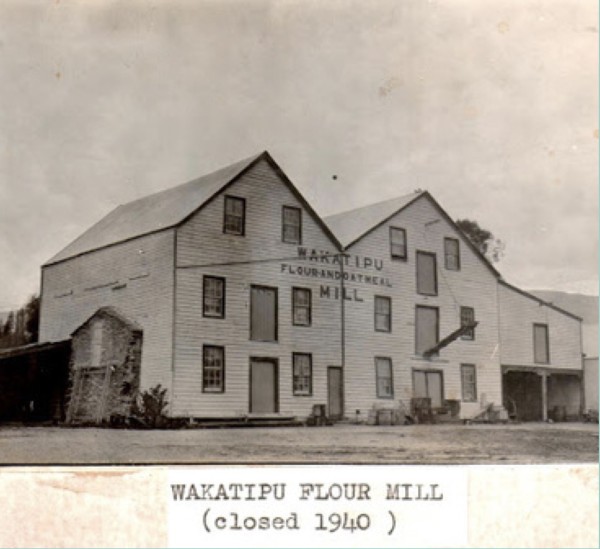
Such was grain production in the district there were four commercial flour mills milling wheat and oats - the Wakatipu Mill at Speargrass Flat (pictured), the Brunswick Mill at Frankton, the Arrow Mill on Mill Creek, and the Luggate Mill (Image: Wao Food Resilience Report).
Learning from the past
We haven’t always been so reliant on the outside world for our food. In fact, as Ms Blackford explains, the food system in the Southern Lakes has changed drastically over the last 150 years. Up until as recently as 70 years ago, we would have been able to source most of our food within a 50 kilometre radius.
While it’s easy to romanticise the good old days, in this case, our ancestors put us to shame.
“Understanding the history of how we used to feed ourselves may provide insights into how we can do this again,” Ms Blackford says.
The first known permanent settlers in the Southern Lakes were the sheep-farming Europeans of the 1860’s - prior to this, Māori would come in from permanent coastal settlements to get food for summer months, and primarily hunted and collected moa, waterfowl, cabbage tree (te kouka) and tuna.
As Ms Blackford explains, there were no roads to the region, with access only by rivers and lakes or overland. “So these settlers had to start their own food system, bringing in cows, chickens, eggs and dairy, and they very quickly had to build their own vegetable gardens and plant orchards,” she says.
As the report outlines, it was an almost entirely self-sufficient model. There was a cheese factory and a fruit cannery, and at one stage, four flour mills. The land proved itself very suitable for growing grains. Every eight weeks a boat came in with supplies from Dunedin.
But as Ms Blackford says, things changed. Export-focused mono crops took over from those which supported self-sufficiency. As our world changes drastically, though, so too must our food system. And while we can’t go back to the past, we can certainly learn lessons from it.
So what can we do?
Growers are unlikely heroes in the typical apocalypse story. Quiet, with dirt-covered hands, and more concerned with getting home to water the tomatoes than fighting off the enemy. But in our current world, with the threats we face now, we desperately need our local producers.
The FRP report showed many of us are trying to grow our own food, with 80 percent of us having something - that might be an orchard or a home garden or chickens. “We are also fairly good at topping up our pantry with home grown, home made, foraged or hunted food, with 85 percent accessing food from these sources,” Ms Blackford says. For most people, though, this is less than 25 percent of their total food supply.
So what’s stopping us? For those who aren’t able to grow more of their own food, Ms Blackford explains, the survey indicated three really clear barriers. “The first was space - so many of our community are renting,” Ms Blackford says. “The second was around knowledge, and the loss of knowledge of how to grow food, particularly in this climate. A lot of people who come here, like myself, have never grown in a crazy, frosty, hot, windy place, so that puts them off. The third was time.”
This is something that matters to our community. Results of the survey show that the large majority believe locally sourced food is either very or extremely important to us. Fortunately, the interviews revealed a number of strengths, opportunities and ideas which could play a large role in re-shaping the future of our food system.
One was the establishment of a local food co-op, allowing local producers to both sell to the local market, and have access to the pooling of certain resources. The second was the development of shared processing facilities, like abattoirs and grain milling, which would mean the local community could be supplied with local produce without it having to be shipped away first. One interviewee advocated for the restoration of the Luggate flour mill. The third was a development of a farmer’s market.
Many of our stakeholders were optimistic about the strengths we have working for us as a region. These included the fact that we have plenty of natural resources and space to grow food, our knowledgeable, passionate and eager community, and an incredible food bowl for hunting and foraging - to name a few.
And, of course, tourism, which Ms Blackford says when it comes to food resiliency, is both a blessing and a curse. More mouths to feed, yes, but as plenty of interviewees pointed out, tourists want to see local food and to be a part of it. By supporting farmers markets and other sectors of the local food system, tourism could be a valuable tool in making this system more robust.
Technology has a role to play, too. An important part of phase one was the development of a food map tool. With the voluntary support of Noemi Holzleg from Environmental Accounting Services, the framework has been created for a map which spatially displays variables like soil types, climate data, current land use and council zoning. To put it simply, it can help us figure out what to grow and where.
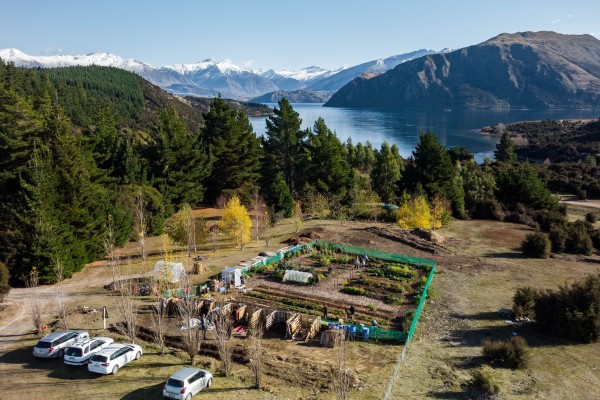
Grow Wānaka's community garden is an example of a group of people building food resilience on a community scale (Image: Facebook).
So with our challenges, strengths and opportunities identified, what are the next steps? The intention following phase one of the FRP is to start building a Food Resilience Network in our district. Forming a Food Resilience Network is one way communities can come together and respond to their own specific food resiliency needs.
Fortunately, there are plenty of examples of other such networks, which the report defines as ‘groups of people which have come together to help develop recommendations and initiatives that support resilience and security within a community’s food system.’
These food resilience groups can operate in a variety of ways, which the report covers in detail. An example of a successful local network is Edible Canterbury NZ, which was formed after the 2010/2011 earthquakes in recognition of a need for a more food resilient region.
A cohesive network is a way that we can take what has been learnt from the Southern Lakes Food Resilience Project so far, and use it to build a local food system which is better prepared for disruptions, wherever these may come from. It is a direct response to the community’s needs, whether those be for co-ops and community gardens, or social support groups.
According to Ms Blackford, the exact next steps for the project are still being worked out, beginning with a proposal for phase two. As she writes in the report, ‘The development of a more robust, localised, vibrant food system is an important driver for a wide range of positive environmental, economic, community wellbeing, emissions mitigation and public health benefits.’
With this in mind, we must continue to build rich, strong soil for our region’s tomorrow.











